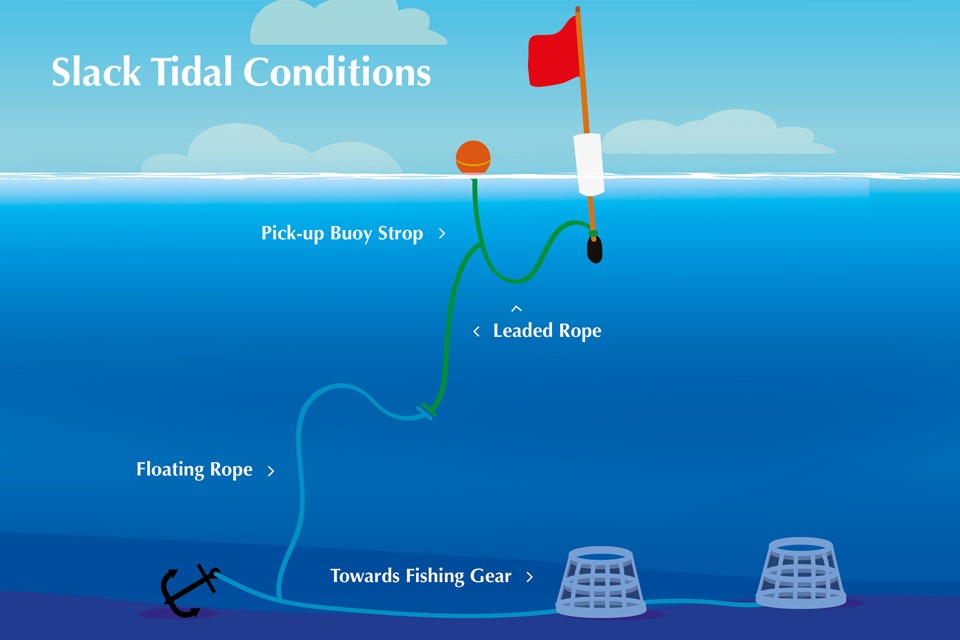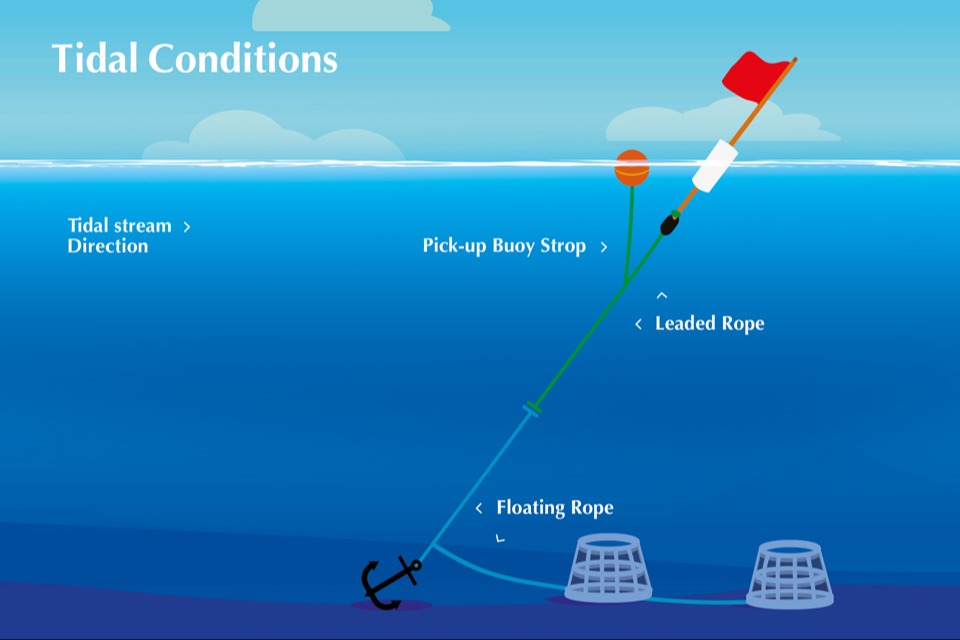Static fishing gear: Design of ends
Published 11 September 2024
Best practice safety princples
The objective of this information note is to provide guidance on the marking of static fishing gear, to improve its visibility, and reduce the risk of entanglement incidents for vessels operating in the waters around the UK.
The images provided as part of this guidance provide only one example of the diverse static fishing gear types used by UK static fishers. The images and accompanying text demonstrate and detail a set of common principles of design and construction that can be applied to other types of static fishing gear, where there is a potential risk of entanglement.
The simple images were developed by the Static Fishing Gear Safety Working Group, a sub-group of the MCA’s United Kingdom Safety of Navigation Committee (UKSON), which includes industry representatives, government representatives and subject matter experts.
Key principles
The overall design of the gear should ensure that no rope of any type will remain floating on the surface, at any state of tide causing a potential entanglement hazard for other marine users.
The upper section of rope which connects the static fishing gear to the surface marker arrangements should be of a leaded construction, or adequately weighted to ensure that all parts of the rope remain below the surface (marked green on the diagram)
If a strop is used between the dan buoy and pickup buoy, then minimal length line is used for the safe work of fishermen and all.
Floating rope should only be used on the lower section of the rope, which lead from the static fishing gear (on the seabed) towards the surface marker (marked blue on the diagram). This will reduce the risk of the rope becoming entangled with obstructions on the seabed with the potential of dragging the surface markers below the surface.
The rope used on static fishing gear, should be of a sufficient diameter/strength and type to ensure that it is durable enough to survive the rigours of the marine environment for the duration of its use.
Any surface marker buoys or flags used should be of a design suitable to alert other marine users to the presence of the gear, so that they may take safely take avoiding action in good time.
When choosing markers for static fishing gear, the following consideration should be amongst those considered:
-
Size: The size of buoys and flags, should be of an adequate size, to ensure maximum visibility, whilst considering operational constraints such as the size/type of the vessel, and local tidal considerations.
-
Colour: The colour of markers should be chosen to ensure that they stand out from the environment. Good examples include fluorescent orange, or red. Colours such as blue, green, black, or white should be avoided.
-
Design: Surface markers should be of a construction to withstand the conditions anticipated during deployment and be fit for purpose, to avoid the risk of becoming marine flotsam.
-
Maintenance: Marker gear and ropes which attach the marker to the static fishing gear, should be regularly inspected and maintained. Marker gear and rope should be cleaned at regular intervals to remove biofouling to ensure that visibility and floatation properties are maintained and that the ropes breaking strain has not been compromised.
Static fishers should also ensure that they make themselves aware of any local requirements under bylaws for design and visibility of static fishing gear.
Slack tidal conditions

Tidal conditions

